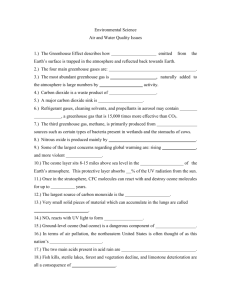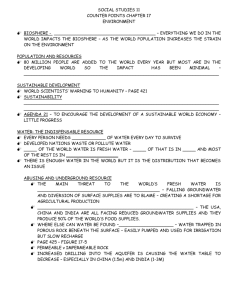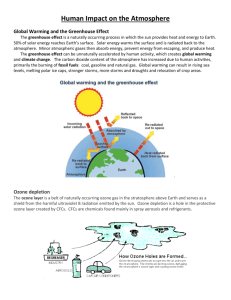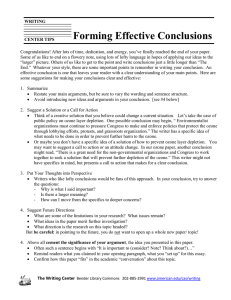Forecasting Climate and Ozone Changes on Multi Decadal Time Scales
advertisement
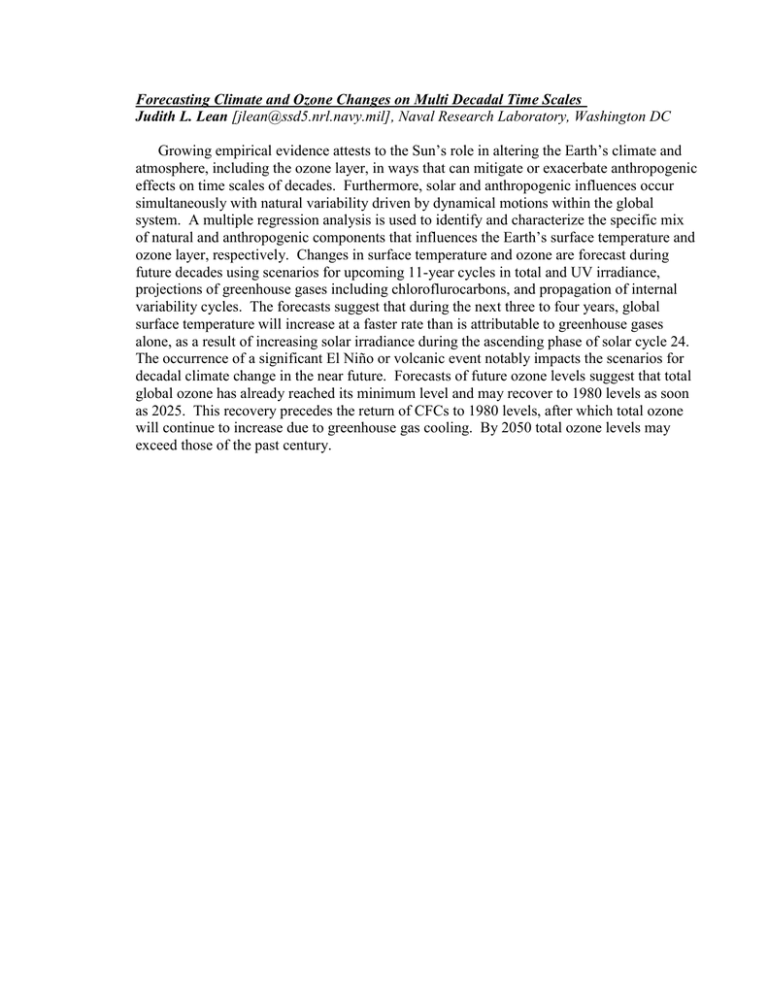
Forecasting Climate and Ozone Changes on Multi Decadal Time Scales Judith L. Lean [jlean@ssd5.nrl.navy.mil], Naval Research Laboratory, Washington DC Growing empirical evidence attests to the Sun’s role in altering the Earth’s climate and atmosphere, including the ozone layer, in ways that can mitigate or exacerbate anthropogenic effects on time scales of decades. Furthermore, solar and anthropogenic influences occur simultaneously with natural variability driven by dynamical motions within the global system. A multiple regression analysis is used to identify and characterize the specific mix of natural and anthropogenic components that influences the Earth’s surface temperature and ozone layer, respectively. Changes in surface temperature and ozone are forecast during future decades using scenarios for upcoming 11-year cycles in total and UV irradiance, projections of greenhouse gases including chloroflurocarbons, and propagation of internal variability cycles. The forecasts suggest that during the next three to four years, global surface temperature will increase at a faster rate than is attributable to greenhouse gases alone, as a result of increasing solar irradiance during the ascending phase of solar cycle 24. The occurrence of a significant El Niño or volcanic event notably impacts the scenarios for decadal climate change in the near future. Forecasts of future ozone levels suggest that total global ozone has already reached its minimum level and may recover to 1980 levels as soon as 2025. This recovery precedes the return of CFCs to 1980 levels, after which total ozone will continue to increase due to greenhouse gas cooling. By 2050 total ozone levels may exceed those of the past century.

